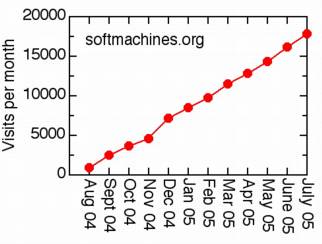Carbon nanotubes are, in principle, about the strongest and stiffest materials we know about. The obvious way to exploit the strength and stiffness of fibrous materials like nanotubes is to use them to make a composite material, like the carbon fibre composites that are currently some of the strongest and lightest materials available for advanced applications like the aerospace industry. But the development of nanotube composites has been disappointingly slow. To quote from a recent review in Current Opinion in Solid State and Materials Science (subscription required) – Carbon nanotube polymer composites – by Andrews and Weisenberger (University of Kentucky), “after nearly a decade of research, their potential as reinforcement for polymers has not been fully realized; the mechanical properties of derived composites have fallen short of predicted values”. One of the major problems has been the tendency of nanotubes to agrregate in bundles – for a composite to work well, the reinforcing fibres need to be evenly distributed through the matrix material.
My friend and colleague from Cambridge, Athene Donald, reminds us that we’ve been here before. In an opinion piece (PDF) in the May issue of Nano Today, she recalls the enthusiasm in the early ’80s for so-called molecular composites. The idea was to take the strong, rigid polymers that were being developed at the time (of which Kevlar is the most famous), and make a composite in which dispersed, individual molecules of the rigid polymer played the role of the fibre reinforcement. Despite the expenditure of large sums of money, notably by the US Air Force, this idea didn’t go anywhere, because the forces that make rod-like molecules tend to want to bunch together are very strong and very difficult to overcome. It’s exactly the same physics that’s making it so hard to make good nanotube based composites.
Athene’s piece is about self-assembly. When so many people (including me) are writing about the huge potential for the use of self-assembly as a scalable manufacturing method in nanotechnology, it’s salutory to remember that the tendency to self-assemble can have unwelcome, as well as beneficial, effects. Matter doesn’t always do what you want it to do, particularly at the nanoscale.
